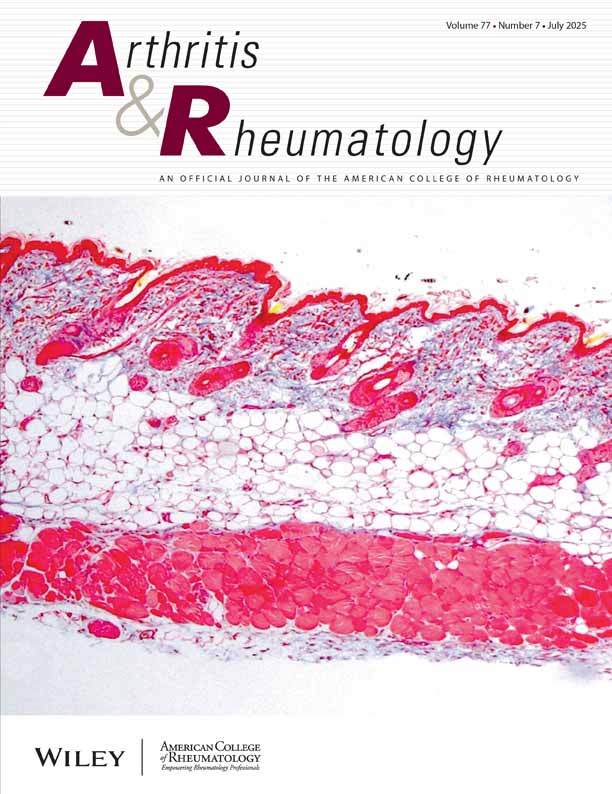Induction of apoptosis and fibrillin 1 expression in human dermal endothelial cells by scleroderma sera containing anti–endothelial cell antibodies
Abstract
Objective
Sera from patients with scleroderma (systemic sclerosis [SSc]) contain anti–endothelial cell antibodies (AECAs) capable of inducing endothelial cell apoptosis. We sought to determine whether SSc sera containing anticentromere antibodies (ACAs) or anti–topoisomerase I antibodies (or, anti–Scl-70 antibodies) contain subsets of AECAs that trigger distinct pathways of apoptosis and gene expression in normal adult human dermal endothelial cells (HDECs).
Methods
Adult HDECs were grown to subconfluence and treated with control or SSc patient sera. Apoptosis was investigated by differential interference contrast (DIC) microscopy, microarrays of proapoptotic gene expression, caspase 3 protease activity, and flow cytometry for phosphatidyl serine translocation.
Results
Flow cytometry and DIC microscopy demonstrated that HDECs exposed to SSc sera containing either SSc autoantibody underwent apoptosis at much higher levels than those treated with control sera. While unique gene expression profiles were induced in HDECs by stimulation with SSc sera containing the respective autoantibody, similar patterns of increased gene expression of transcripts for the proapoptotic protease caspase 3 as well as the SSc autoantigen fibrillin 1 were demonstrated. Caspase 3 gene expression correlated with increased protease activity, and targeted inhibition of this protease partly blocked SSc serum–induced apoptosis. Immunohistochemistry studies of serum-stimulated HDECs demonstrated the aberrant expression of fibrillin 1 protein only in apoptotic endothelial cells treated with SSc sera containing AECAs.
Conclusion
There are distinct AECA subsets in the sera of patients with limited SSc (with ACAs) and diffuse SSc (with anti–Scl-70) that induce unique patterns of HDEC gene expression in the setting of apoptosis associated with increased caspase 3 activity and the reexpression of endothelial cell fibrillin 1.




